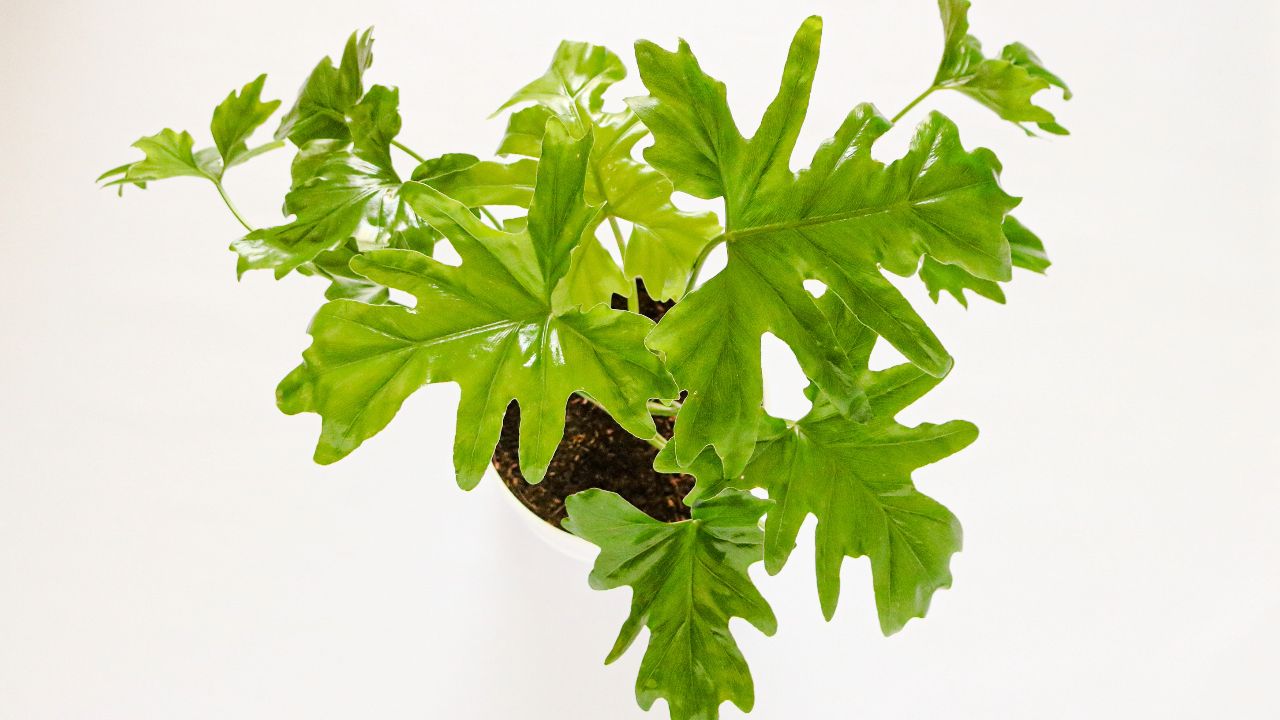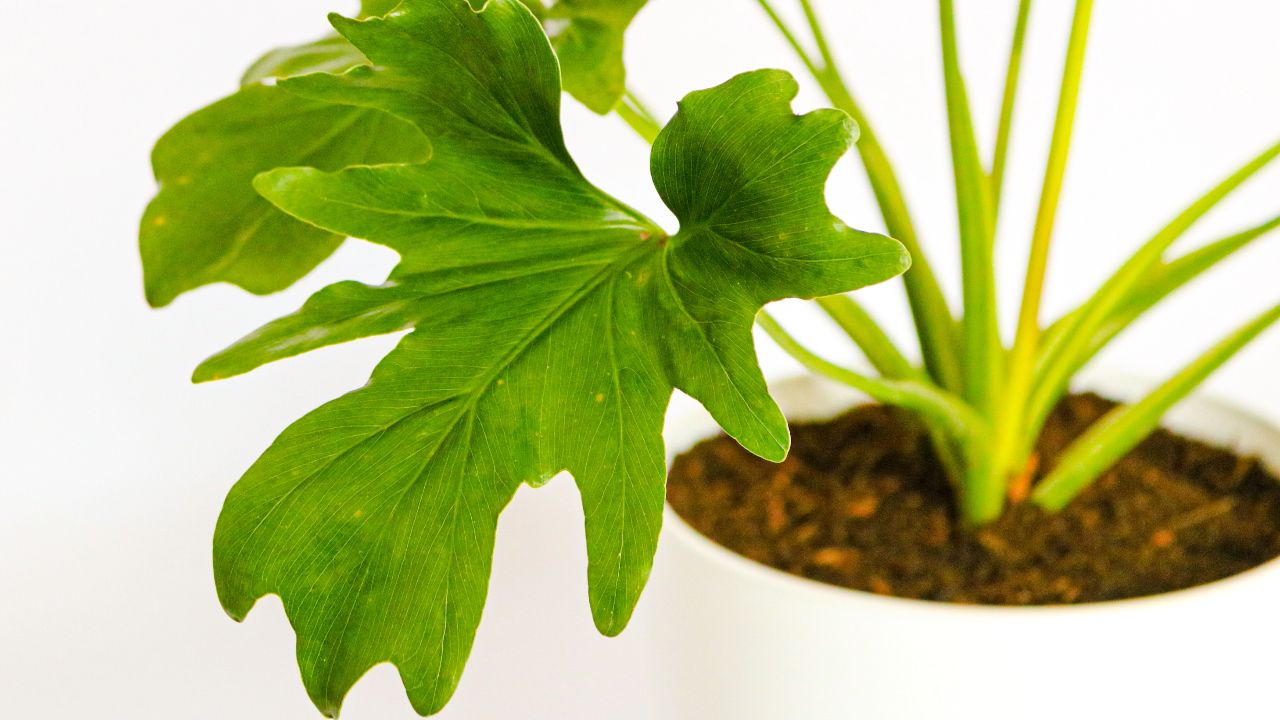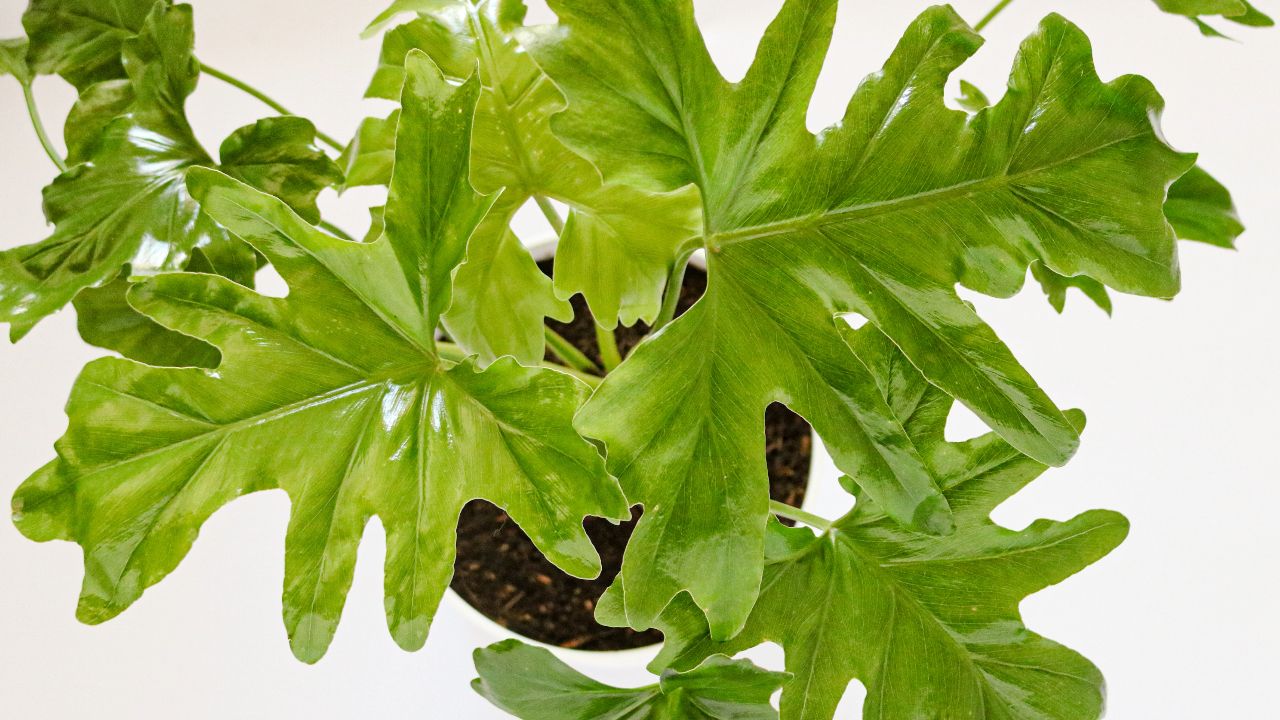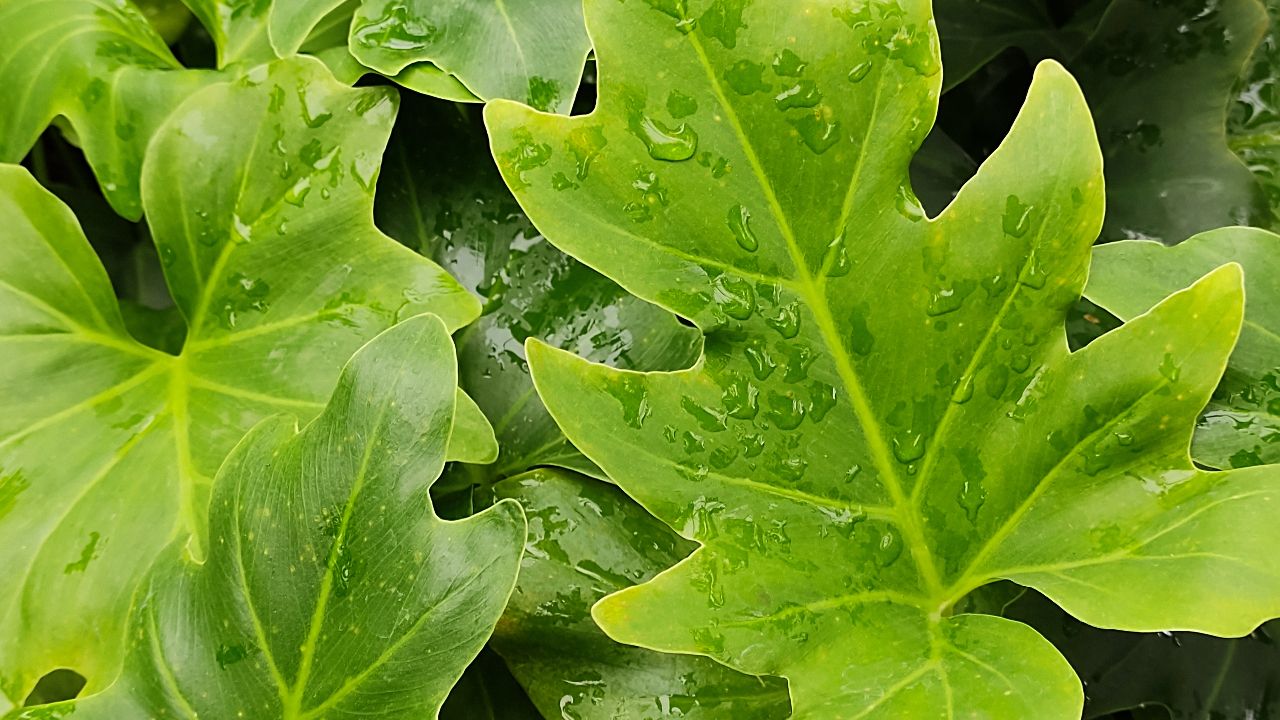
At a Glance: Tree Philodendron
- Botanical Name: Philodendron bipinnatifidum, Thaumatophyllum bipinnatifidum
- Common Names: Tree philodendron, lacy tree philodendron, Philodendron selloum, and horsehead philodendron
- Plant Type: Broadleaf evergreen
- Mature Size: Can grow up to 15 feet tall and spread 10 feet outdoors; while indoors, it typically reaches 6 feet in height with an 8-foot spread
- Sun Exposure: Prefers part shade and should avoid direct, full sun
- Soil Type: Thrives in loamy, moist but well-draining soil
- Soil pH: Adaptable to neutral and alkaline soil conditions
- Bloom Time: Flowers in the spring and summer seasons
- Flower Color: Produces white blooms
- Hardiness Zones: Suited for Zones 9 to 11
- Native Area: Originally from South America
- Toxicity: Toxic to both humans and pets
Imagine stepping into a space adorned with lush, broad leaves, each boasting an intricate pattern of splits and laces. You've just encountered a well-grown tree philodendron, a tropical plant prized for its ornamental beauty. Native to South America, this stunning plant elevates any indoor space with its majestic presence. But what if you could replicate this beauty multiple times over? Enter the art of tree philodendron propagation.
Why propagate the tree philodendron? For many, the idea of taking a mature plant and turning it into several thriving new plants is an exciting venture. Propagating tree philodendrons not only allows you to expand your green collection but is also a cost-effective way to enhance multiple spaces with this tropical gem. Plus, it's a rewarding experience to see new tree philodendrons grow from a mere stem cutting or leaf node.
The beauty and benefits of a well-grown philodendron Philodendrons are more than just an ornamental plant; they're a testament to the wonders of nature. As they thrive, they purify the air, making indoor spaces healthier. Their large leaves, characteristic of species like the split leaf philodendron and lacy tree philodendron, bring a sense of the tropics right into your living room. Moreover, philodendrons are relatively easy to care for, requiring just the right amount of indirect light, moisture, and a well-draining potting mix.
As we delve deeper into this guide, you'll learn the intricacies of tree philodendron propagation, ensuring you can successfully cultivate new plants, keeping their beauty alive for generations to come.
Join our newsletter
Stay on top of the latest in landscaping and lawn care with one valuable tip right in your inbox every Saturday morning.
An Insight into Tree Philodendron
As you step into the verdant realms of tropical flora, few plants captivate the heart as effortlessly as the tree philodendron. With sprawling leaves and an air of exuberance, it's a vision of nature's grandeur. But to truly appreciate its majesty, one must journey back to its roots, deep within the rainforests of South America.
Origins and the South American Heritage of the Tree Philodendron
The tree philodendron's story begins amidst the dense canopies and humid environments of South America. It is here, beneath the shelter of towering trees and kissed by dappled indirect sunlight, that the tree philodendron grows in its natural splendor. This environment, rich in biodiversity, has given rise to a plant that's not only beautiful but also resilient. It's a testament to the tree philodendron's adaptability that it thrives so well as an indoor plant, bringing a slice of South America's tropical wilderness into homes worldwide.
Popular Variants: Split Leaf Philodendron and Lacy Tree Philodendron
While the generic term 'tree philodendron' might suggest a singular entity, this tropical plant boasts a variety of forms. Among the most celebrated are the:
- Split Leaf Philodendron: Recognized for its unique foliage, split leaf philodendrons possess leaves that, as they mature, develop characteristic splits, almost like nature's intricate lacework. Their dramatic appearance makes them a favorite among plant enthusiasts and interior designers alike.
- Lacy Tree Philodendron: Another marvel, the lacy tree philodendron, also known as philodendron selloum, boasts deeply lobed leaves. The intricate patterns and deep green hue make it a standout in any plant collection.
In the subsequent sections, we'll dive deeper into the captivating world of tree philodendrons, guiding you through their care, propagation, and much more.

Propagation Techniques for Tree Philodendron
The sheer beauty and allure of a tree philodendron can make any plant lover yearn to multiply their collection. Fortunately, propagating this tropical gem is not an arcane art, but a simple process that, with a little knowledge and care, can yield stunning results. Whether you're hoping to extend your own green oasis or gift a piece of your treasured plant to a fellow enthusiast, understanding propagation is key. So, let's dive into the world of tree philodendron propagation.
The Ideal Time: Understanding the Growing Season
Every plant has its rhythm, a period when it's most receptive to growth and change. For the tree philodendron, this period is the growing season. Typically, the best months for propagation are late spring to early summer. This is when the plant is in its prime growth phase, with increased metabolic activity and root growth. During this period, the tree philodendron is more likely to adapt and flourish in new settings, making it the perfect window for propagation.
Stem Cutting Versus Root Cutting: What Works Best
Propagating the tree philodendron can be achieved in two primary ways:
- Stem Cutting: This method involves taking a healthy stem cutting, ideally with a few leaves attached, and placing it in water or moist soil to encourage root growth. This technique is particularly effective because stem cuttings tend to develop roots relatively quickly, ensuring a successful propagation.
- Root Cutting: While slightly more intricate, root cutting involves extracting a portion of the plant's root system and planting it. This method, though effective, may require a longer period for the new plant to showcase visible growth.
It's essential to weigh the pros and cons of each method, considering factors like the available plant material, space, and your patience level!
Split Leaf Philodendron Propagation: A Deeper Dive
The split leaf philodendron, with its ornate and dramatic leaves, demands a special mention when it comes to propagation. Similar to its tree philodendron counterpart, the split leaf variant can be propagated using stem cuttings. It's crucial to choose a mature plant for the cutting, ensuring that the segment has at least one leaf node. Once cut, the stem can be placed in water or a well-draining potting mix, patiently awaiting the magic of growth.
In upcoming sections, we'll guide you through the step-by-step process of each method, ensuring that your philodendron propagation journey is both informative and successful.

Caring for Newly Propagated Philodendrons
Cultivating a tree philodendron from propagation is an endeavor of patience and love. However, as any seasoned gardener would attest, the true challenge often lies in nurturing the newly propagated plants, ensuring they grow into healthy, mature specimens. As these young plants embark on their journey, several factors play crucial roles in their development.
Ensuring the Right Environment: Bright Indirect Light and Optimal Humidity
Every tree philodendron yearns for a touch of its tropical roots. Ensuring they receive bright indirect light is paramount. Direct sunlight can scorch their leaves, hindering their growth. Place them in a spot where they can enjoy bright but diffused light. Alongside, maintaining optimal humidity is equally crucial. After all, the tree philodendron hails from the humid environments of South America, so recreating that atmosphere can be a catalyst for healthy growth. Using a humidifier or misting the plant can help achieve this tropical ambiance.
The Dangers of Overwatering: Root Rot and Its Signs
One of the most common pitfalls in caring for a newly propagated tree philodendron is overwatering. This can lead to the dreaded root rot. Tell-tale signs include yellow leaves, a saggy appearance, and, in advanced stages, dark brown leaves. It's essential to keep the soil moist but not waterlogged. Remember, a well-draining potting mix can be your best ally against soggy soil and the ensuing root rot.
Importance of Potting Mix and Drainage in Preventing Soggy Soil
Equipping your plant with the right potting mix can make all the difference. A well-draining potting mix ensures that excess water doesn't remain in the soil, protecting the delicate root system of your newly propagated philodendron. Additionally, pots with adequate drainage holes are non-negotiable. They allow surplus water to escape, maintaining a balance of moisture that promotes root growth without drowning them.
In essence, caring for your young tree philodendron involves a blend of providing the right conditions, being vigilant against overwatering, and equipping it with the tools to thrive. With these in place, you're well on your way to seeing your plant grow into a majestic specimen.

Growing a Mature Tree Philodendron
The path from a tiny propagule to a fully grown tree philodendron is an odyssey filled with triumphs and challenges. Much like watching a child grow, witnessing the stages of a tree philodendron's life is nothing short of magical. From the first sprout to its sprawling majesty, each phase is unique. But to ensure this journey is smooth, understanding the intricacies of its care, especially as it moves towards maturity, is pivotal.
From a Propagule to a Mature Plant: The Journey
The initial days of a tree philodendron are marked by its delicate dependence on the environment. As the root system establishes, the first set of leaves begin to emerge. Slowly, but surely, with each passing season, the plant inches towards its full glory. The transformation from a tiny plantlet to a sprawling tree philodendron grows more profound and noticeable. Mature plants flaunt larger leaves, a stronger stem, and often, a broader canopy. This journey, while gratifying, demands patience, dedication, and an understanding of the plant's intrinsic needs.
Avoiding Common Challenges: Yellow Leaves, Pest Infestations, and More
As with any long voyage, the tree philodendron's growth journey isn't devoid of obstacles. Yellow leaves, often a sign of overwatering or poor nutrient intake, can be distressing. Moreover, pest infestations, particularly from spider mites, can hamper healthy growth. Regular checks, a keen eye for early signs, and prompt action can mitigate these challenges. Cleaning the leaves with a damp cloth, ensuring a well-draining potting mix, and maintaining optimal temperature and humidity can prevent most common issues.
Join our newsletter
Stay ahead of the curve in all things outdoor.
Get the inside scoop on the latest landscaping, lawn care, and fencing trends with 1 actionable tip every Saturday morning.
Providing the Right Nourishment for Healthy Growth
A mature tree philodendron, like any other ornamental plant, thrives when provided with the right nutrients. A balanced liquid fertilizer, applied during the growing season, ensures the plant receives all essential minerals. Moreover, ensuring the potting soil remains consistently moist (but not waterlogged) is key. Remember, while these plants appreciate moisture, they don't fare well in soggy soil. Regularly rotating the plant ensures all its leaves receive equal exposure to bright light, fostering uniform growth.
In summation, guiding a tree philodendron to maturity is a commitment. It's about understanding its needs, preempting challenges, and celebrating its milestones. As your plant unfurls each new leaf, it's a testament to your care and dedication, and a reward in its own right.
Special Features of Philodendron Variants
The captivating world of philodendrons is a tapestry of vibrant colors, unique forms, and astounding adaptations. While all variants of this genus are known for their beauty and resilience, a few stand out for their exceptional characteristics. In this segment, let's dive into the mesmerizing world of split leaf philodendrons, explore the allure of the lacy tree philodendron, and unravel the mystery behind the fascinating aerial roots present in many philodendron family members.
Unveiling the Charm of Split Leaf Philodendrons
Among the pantheon of philodendron plants, the split leaf philodendron, often mistaken for its close relative the monstera deliciosa plants, holds a special place. Its large, perforated leaves, resembling the delicate work of lace or an artist's intricate stencil, are its defining trait. Beyond their aesthetic allure, these perforations play a pivotal role in allowing the plant to withstand strong winds in its natural habitat, preventing breakage by letting the wind pass through the slits.
Lacy Tree Philodendron: A Visual Treat
Next in our journey is the visually stunning lacy tree philodendron. A testament to nature's creativity, its leaves, with their delicate, lace-like patterns, are a favorite among plant enthusiasts and interior decorators alike. Their ornate appearance, coupled with the plant's adaptability, makes it an ideal choice for both indoor plantscapes and outdoor gardens in tropical climates.
The Aerial Roots Phenomenon and Their Importance in the Philodendron Family
A captivating feature that many philodendron variants boast is their aerial roots. These are not mere ornamental quirks but are essential lifelines. Aerial roots aid in supporting the plant as it climbs and also play a role in absorbing nutrients and moisture from the air, especially in humid environments. For plants like the tree philodendron, which often anchor onto larger trees or structures in their native habitats, these roots are pivotal for survival, ensuring they remain anchored while also accessing essential nourishment.
In the vast realm of flowering plants, philodendrons hold a special place, not just for their aesthetic appeal but also for their remarkable adaptations. Each variant, with its unique features and stories, adds to the tapestry, making the philodendron family one of the most cherished in the botanical world.

Common Challenges and How to Overcome Them
Gardening is as much an art as it is a science. When cultivating something as majestic as the tree philodendron, challenges can arise. But fear not! With a bit of knowledge and the right approach, your philodendron plant can thrive and reach its full ornamental potential. Whether you're dealing with the notorious root rot or trying to ward off pesky spider mites, understanding these challenges is the first step to ensuring the healthy growth of your beloved plant. Let's delve into some common issues and their solutions.
Root Rot: Causes, Identification, and Treatment
Root rot is a bane for many plant enthusiasts. Often caused by a combination of poor drainage and overwatering, it affects the root system, making it difficult for the plant to absorb essential nutrients. Telltale signs include yellow leaves and a soggy soil feel. Addressing this means ensuring a well draining potting mix and avoiding over-watering. Regular checks on the root system can also provide early indications, allowing for timely intervention.
Dealing with Spider Mites and Other Pest Infestations
Spider mites are tiny, but their damage can be colossal. These pests, along with others like aphids and mealybugs, can hinder the growth of your philodendron plants. Keeping your plant in optimal health, regularly wiping its leaves with a damp cloth, and ensuring good temperature and humidity can deter these pests. If an infestation does occur, natural insecticides or neem oil sprays can be your savior.
Recognizing and Rectifying Compacted Soil and Dark Brown Leaves
Compacted soil can stifle the root growth, while dark brown leaves are often indicative of too much direct sunlight. If your potted specimen shows these signs, consider repotting with a lighter potting soil mix. Additionally, ensure your tree philodendron is placed in bright indirect light, avoiding the harsh afternoon sun.
In the lush world of philodendrons, understanding and overcoming these challenges can make the difference between a wilted plant and a flourishing spectacle. With the right care, your tree philodendron can be a testament to your gardening prowess.
Safety Precautions for Philodendron Owners
The allure of the tree philodendron and its cousins isn't just in their striking appearance. For many, they're a symbol of the serene, lush tropics, a slice of nature right inside our homes. Yet, like many things in nature, they come with their own set of cautions. While philodendrons are a visual treat, it's essential to know they aren't always a treat for our system if ingested. Safety, after all, should be every plant owner's top priority.
Toxicity Levels in Philodendrons: Ensuring Safety
Philodendrons, as stunning as they are, contain calcium oxalate crystals which can be harmful if consumed. Whether you have curious children or pets, ensuring your philodendron plant is placed out of their reach is paramount. It's not about being paranoid; it's about being prepared and informed.
When Ingestion Happens: The Importance of Seeking Medical Attention Immediately
Accidents happen. If someone ingests part of the plant, the first step should always be to seek medical attention immediately. Symptoms like swelling, pain, or difficulty swallowing might ensue after consumption. Swift action can make all the difference.
In your journey of plant ownership, let's ensure it remains a pleasant and safe one. By understanding the risks and acting responsibly, you can enjoy the beauty of philodendrons without compromising on safety.
Celebrating the Joy of Philodendrons
The world of tree philodendrons is vast, intriguing, and above all, truly rewarding. From its rich South American roots to its widespread adoption as a prized ornamental plant, the tree philodendron has indeed captured the hearts of many. This guide has taken you on a comprehensive journey, from understanding its origins, diving deep into the various propagation techniques, to ensuring its healthy growth and recognizing potential challenges.
Propagating and caring for a tree philodendron might come with its set of challenges, but the end result is nothing short of spectacular. The deep greens, the intricate patterns of the split leaf philodendron, and the majestic stance of the mature plants can transform any space into a tropical sanctuary. And isn’t that worth every ounce of effort?
For those who've been contemplating starting their propagation journey, there’s no better time than now. With the right techniques, care, and a sprinkle of patience, you too can boast of a thriving philodendron collection. Let the beauty of tree philodendron propagation become your next green endeavor. Celebrate the joy of philodendrons, and revel in the splendor they bring to our lives.
Join our newsletter
Stay ahead of the curve in all things outdoor.
Get the inside scoop on the latest landscaping, lawn care, and fencing trends with 1 actionable tip every Saturday morning.